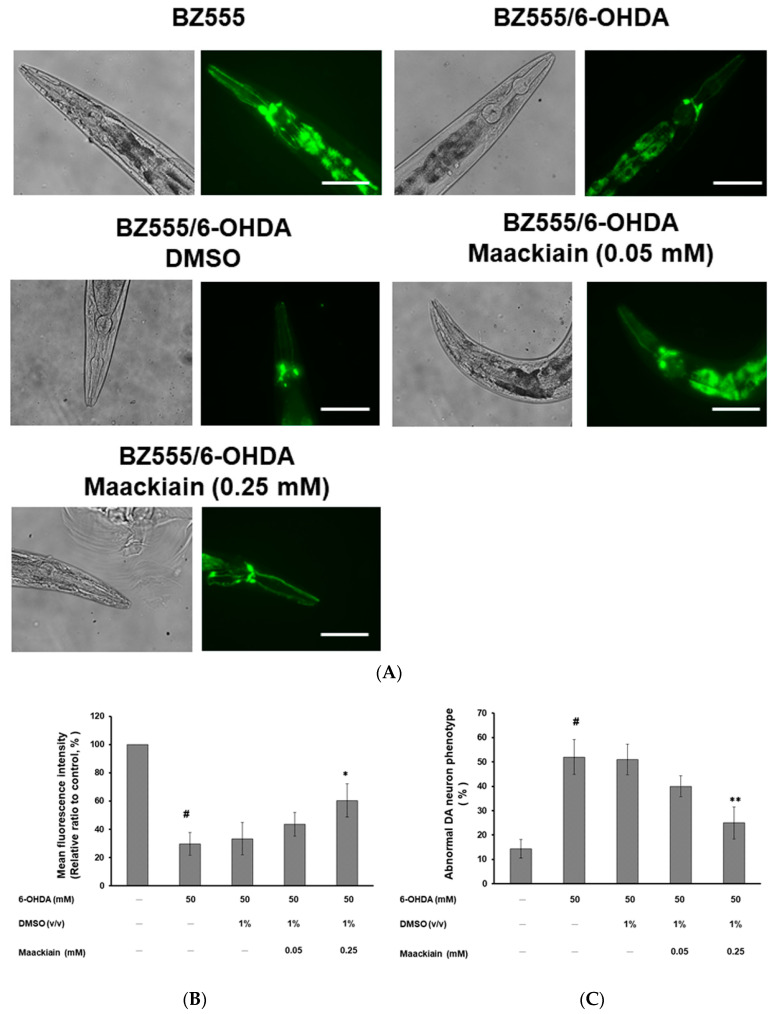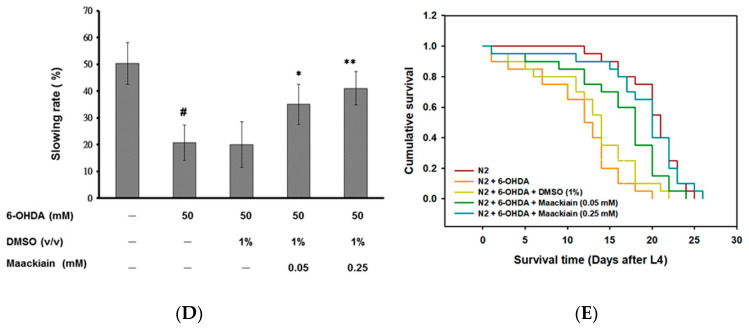Figure 3.
6-hydroxydopamine (6-OHDA)-induced degeneration of dopaminergic (DA) neurons, defects in food-sensing behavior, and shortening of life-span in the BZ555 strain were ameliorated by maackiain (MK) treatment. MK-pretreated or untreated L3 stage BZ555 worms were exposed to 6-OHDA and then cultured for an additional 3 days. (A) Representative fluorescence images of GFP expression in DA neurons. Scale bar = 50 µm. (B) Quantifying of GFP fluorescence intensity pattern in 50 animals per group using ImageJ software. (C) Degenerative phenotypic defects of DA neurons were scored for 50 animals per group. Data are presented as a percentage of the total population with abnormal phenotypes in each treatment group. (D) Slowing rates were calculated as the percentage lessening in frequency of body bending (20 s) in the bacterial lawn compared to without a bacterial lawn for 50 animals per group. (E) Cumulative survival curves for worms cultured in OP50/NGM plates until all worms died (50 animals per group). In the above experiments, # shows significant differences between 6-OHDA-exposed and control worms (# p < 0.001); * shows significant differences between the MK-pretreated 6-OHDA-exposed and MK-untreated 6-OHDA-exposed groups (* p < 0.05, ** p < 0.01).


